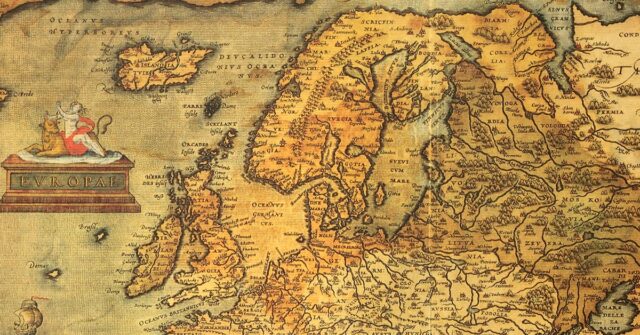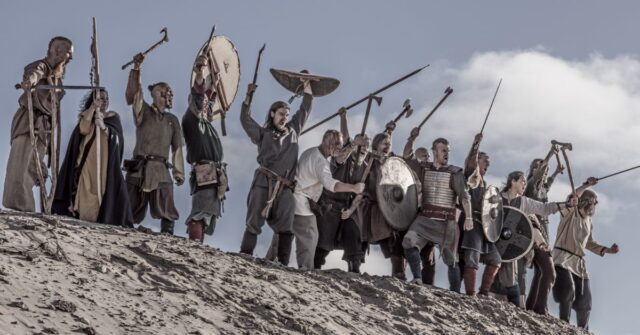Embarking on a journey through the verdant branches and deep roots of Yggdrasil, the Tree of Life, is like stepping into a lush, ancient forest where every leaf whispers tales of yore.
This majestic tree, standing tall at the center of Norse cosmology, isn’t just a plant; it’s a complex symbol of life, interconnection, and mystery.
So, grab your explorer’s hat—we’re going to dig deep into the roots (pun intended) of Yggdrasil and discover the wonders it holds.
Introduction to Yggdrasil
The name Yggdrasil evokes images of immense beauty and grandeur. Rooted deeply in Norse mythology, it represents the universe’s structure, embodying the connection between all things.
The name itself hints at an “Odin’s horse,” a poetic metaphor that reflects the depth and complexity of this mythological concept.
The Meaning of Yggdrasil
At its core, Yggdrasil is more than just a tree; it’s a living metaphor for the cosmos. Its branches stretch out to the heavens, its trunk stands as the world’s axis, and its roots delve into the underworld.
This structure illustrates the Norse belief in a universe comprised of multiple layers of existence, intertwined and interdependent.
Yggdrasil in Norse Mythology
In the sagas, Yggdrasil’s presence is a constant reminder of the world’s interconnectedness.
Legends tell of gods holding councils beneath its branches, of dragons gnawing at its roots, and of wise animals that dwell within its bark.
Each story, each character linked to Yggdrasil adds layers to its significance, painting a picture of a world where the divine, the earthly, and the infernal coexist closely.
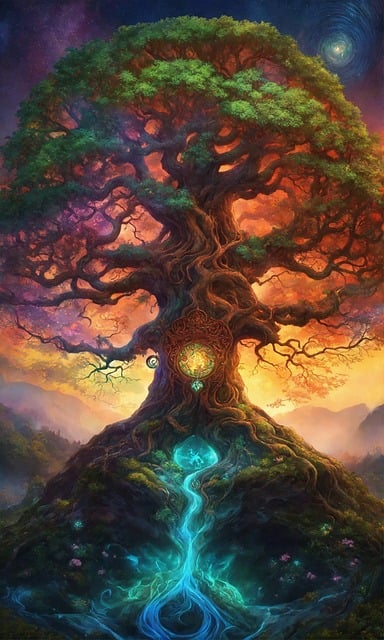

The Symbolism of Yggdrasil
Yggdrasil stands as a towering figure of unity and harmony amidst the Norse cosmological landscape.
Its symbolism reaches far beyond the literal, touching on themes of life, death, rebirth, and the eternal cycle of existence.
Connection Between the Worlds
The great ash tree serves as a bridge connecting the Nine Worlds, allowing beings to move between realms.
This portrays a universe where boundaries are fluid, and entities from different planes can interact—a concept that challenges our understanding of space and separation.
The Tree of Life and Its Meanings
Life, in the eyes of the Norse, was a cycle as perennial as Yggdrasil’s foliage. The tree’s evergreen nature symbolizes endurance, resilience, and the eternal spirit of the cosmos.
Through the cycle of seasons, Yggdrasil experiences growth and decay, mirroring the human experience of birth, life, death, and rebirth.
Yggdrasil and the Cosmic Structure
Imagine the universe as a house with many rooms, and Yggdrasil as the central pillar holding everything together.
Its roots and branches penetrate all corners of existence, suggesting that all aspects of the cosmos—gods, humans, and all creatures—are fundamentally connected.
Descriptions of Yggdrasil
The physical descriptions of Yggdrasil paint a vivid picture of a tree so vast that its canopy touches the sky, and its roots reach down into the unknown depths of the underworld.
This is a tree that thrives amidst the extremities, harboring life within its bark and beneath its leaves.
Physical Attributes of Yggdrasil
Yggdrasil’s magnificence is unparalleled, its branches spreading wide across the heavens.
Its trunk, sturdy and enduring, supports the weight of the world, while its roots delve into the mysteries of the three wells that feed it wisdom, fate, and knowledge.
Yggdrasil’s Inhabitants
This mythical tree is far from solitary. It teems with life, hosting a variety of creatures that symbolize different aspects of existence.
From the dragon Nidhogg gnawing at its roots to the eagle perched atop its branches, each creature adds to the tree’s story, representing the constant struggle between destruction and renewal.
The Creatures of Yggdrasil
Among the rustling leaves and hidden nooks, a menagerie of beings plays out the drama of life.
The wise squirrel Ratatoskr carries messages between the eagle and the dragon, symbolizing communication and the flow of information.
Meanwhile, the stags that graze its branches represent the vitality and growth that Yggdrasil fosters.
Gods and Goddesses Associated with Yggdrasil
The gods, too, find shade and council beneath Yggdrasil’s vast canopy.
Odin, the Allfather, once hung from its branches for nine nights, a testament to his quest for wisdom and the sacrifices made for knowledge.
This deep connection between the deities and the tree underscores the sacred nature of Yggdrasil within Norse culture.
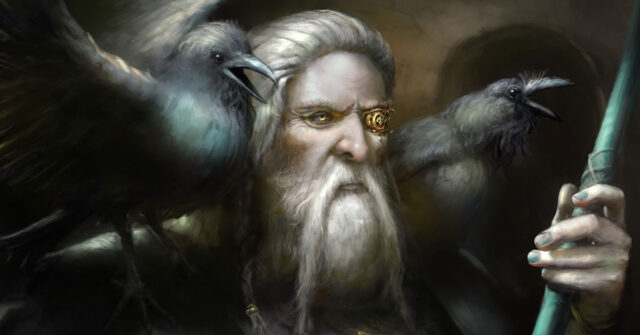

The Nine Worlds of Yggdrasil
The concept of the Nine Worlds showcases the diversity and complexity of the Norse universe, each world a domain with its own inhabitants and rules, yet all interconnected through Yggdrasil.
Overview of the Nine Worlds
These worlds range from the shining halls of Asgard, home to the gods, to the murky depths of Helheim, the realm of the dead.
This structure reflects a cosmology rich in variety yet united under the umbrella of Yggdrasil.
Individual Descriptions of the Worlds
Each world has its own story, its own landscapes, and its own inhabitants. Let’s take a whirlwind tour through these realms, exploring the unique characteristics that define them.
Midgard: The World of Humans
Midgard stands as the realm most familiar to us, the world of humanity, encircled by the immense serpent Jormungandr. This world symbolizes the known, the everyday struggles and joys of human life.
Asgard: The Realm of the Gods
Above all sits Asgard, accessible only by the Bifrost, the rainbow bridge.
Home to Odin, Thor, and the rest of the Aesir, Asgard is a place of power, wisdom, and warfare, reflecting the valor and cunning of its inhabitants.
Jotunheim: The Land of the Giants
Rugged and wild, Jotunheim is the domain of the giants, beings of immense strength and ancient wisdom. Their land is one of primal nature, untamed and fierce, often at odds with the gods.
Helheim: The World of the Dead
Far beneath the living worlds lies Helheim, ruled by the goddess Hel. This is the final resting place for those who did not die in battle, a realm of shadow and mist, quiet and eternal.
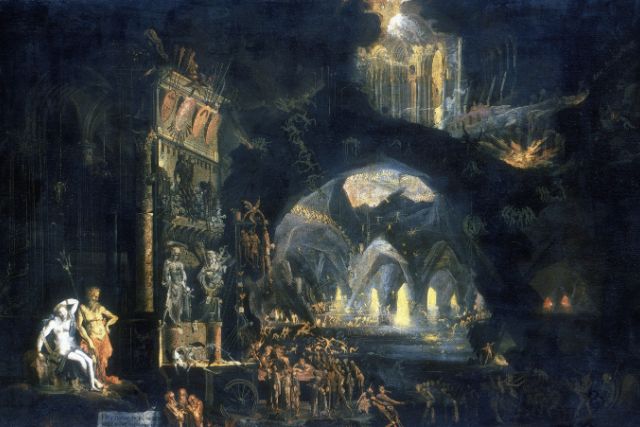

Vanaheim: The Home of the Vanir
Vanaheim, lush and bountiful, is the realm of the Vanir gods, known for their connection to nature, fertility, and magic.
Their world is one of ancient forests and endless fields, symbolizing growth and renewal.
Alfheim: The Land of the Elves
Alfheim is the luminous world of the elves, beings of beauty and light. Their realm is one of enchantment, where magic weaves through every leaf and stream, highlighting the ethereal and the otherworldly.
Svartalfheim: The Realm of the Dwarves
Deep within the earth lies Svartalfheim, the domain of the dwarves.
Renowned for their craftsmanship and metallurgy, their world is one of caverns and forges, where wondrous artifacts are born from fire and stone.
Niflheim: The World of Ice
Niflheim, a realm of bitter cold and desolation, represents the stark and merciless aspect of nature.
Its icy landscapes are both beautiful and deadly, a reminder of the harsh realities that can befall those unprepared.
Muspelheim: The World of Fire
Contrasting Niflheim, Muspelheim is a land of searing heat and flames, home to fire giants and endless infernos.
It symbolizes destruction and chaos, but also purification and the potential for new growth from the ashes.
Yggdrasil in Literature and Modern Culture
The roots of Yggdrasil run deep not only through the ancient texts but also through modern culture, influencing literature, art, and even popular media.
This ancient symbol continues to inspire and fascinate, bridging worlds and generations.
Yggdrasil in Ancient Texts
From the Poetic Edda to the Prose Edda, Yggdrasil has been a central figure in Norse literature, serving as a backdrop for many of the myths and legends that form the backbone of Norse mythology.
Modern Interpretations and Inspirations
In today’s world, Yggdrasil finds new life in novels, movies, and video games, captivating imaginations with its rich symbolism and the timeless stories it represents.
Its universal themes of connection, resilience, and renewal resonate across cultures, making it a symbol as relevant today as it was a thousand years ago.
Religious and Philosophical Interpretations of Yggdrasil
Yggdrasil’s significance extends beyond mythology into the realms of spirituality and philosophy, where it serves as a symbol for the interconnectedness of all things and the cycle of life and death.
Yggdrasil’s Role in Norse Religion
In the Norse spiritual view, Yggdrasil’s presence affirmed the interconnected nature of all life, offering a model for understanding the universe’s structure and the individual’s place within it.
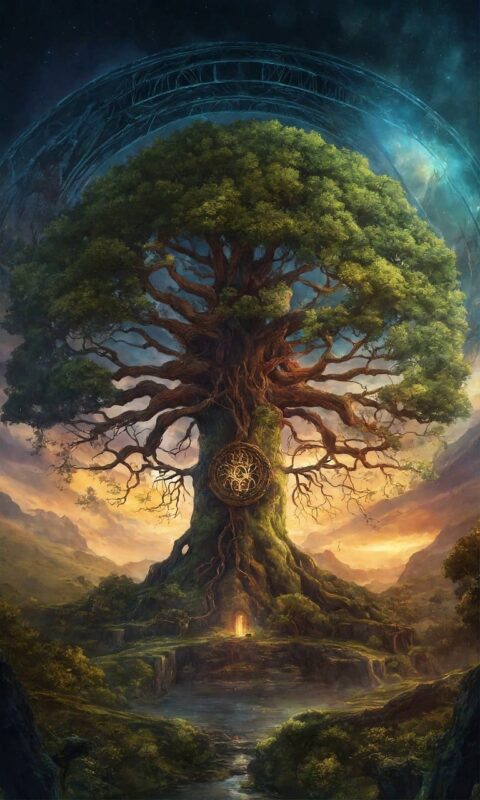

Modern Spiritual and New Age Views
Today, Yggdrasil continues to inspire those exploring their own spiritual paths, embodying concepts of unity, harmony, and the eternal cycle of nature.
Its image serves as a powerful reminder of our place within the larger tapestry of existence.
Conclusion: The Enduring Legacy of Yggdrasil
The tale of Yggdrasil is as enduring as the tree itself, a symbol that has grown and branched out through centuries, touching hearts and minds across the world.
It reminds us of our interconnectedness, our resilience, and the cycles of life that move ever onwards.
So the next time you see a tree reaching its branches towards the sky, spare a thought for Yggdrasil, the great ash tree that binds the worlds together, reminding us of the stories that weave through our lives and the ancient wisdom that still holds relevance in our modern world.








